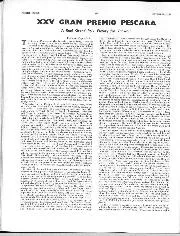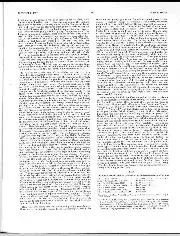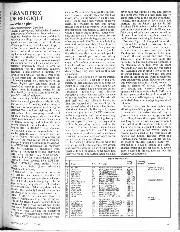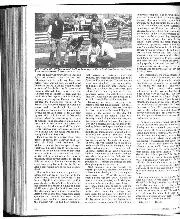The teams didn’t care for this request and both races were cancelled at the 11th hour amid rancour. Yet the cloud had a silver lining as F1’s governing body looked at its now thin six-round (not including the anomalous Indianapolis 500) calendar and, to fill it out, scanned for willing new hosts. It found one in Pescara, where locals were keen to rekindle traditions
The Adriatic town in Italy had hosted races going back to 1924 and its circuit, winding through mountains and villages next to the town, even then had a throwback air. “The whole thing is pure unadulterated ROAD RACING,” enthused Denis Jenkinson for Motor Sport.
It was the first time a championship calendar had two races in a single country, plus 16-mile Pescara forever deprived the Nürburgring Nordschleife rank as the championship’s longest circuit.
1969 Belgian Grand Prix

1969 safety concerns spelled the end of the historic Spa circuit
Motorsport Images
Spa routinely tops modern-day popularity polls, but once upon a time it was infinitely more fearsome. Yet by the late 1960s safety was in the sights of the increasingly-active Grand Prix Drivers’ Association. Jackie Stewart demanded changes at Spa for the ’69 race.
They never arrived. Officials cited short notice. Factional Belgian motor racing politics perhaps contributed to the impasse. No doubt circuit owners, long possessing the whip hand, underestimated the drivers’ resolve. But the GPDA withdrew the drivers’ labour, so the race was off.
And Jenks wasn’t happy, suggesting in Motor Sport that “our so-called grand prix drivers take up knitting, using special needles without sharp points”. The track returned in 1970 with a chicane, but that was F1’s final visit to ‘old’ Spa.
It wasn’t the end of the sniping though, as in ‘72 Jenks spoke of “a certain beady-eyed little Scot,” whose “pious whinings have brain-washed and undermined the natural instincts of some young and inexperienced newcomers to grand prix racing and removed the Belgian Grand Prix from Spa-Francorchamps.”
Stewart’s view prevailed of course. As he mused elsewhere, “safety didn’t come easy”.
1983-85 New York Grand Prix

Formula E raced in the shadow of the Manhattan skyline; F1 hasn’t managed it
Motorsport Images
The attraction to F1 of holding races in the USA is obvious. And for reasons that are about as obvious a New York City race is considered the ultimate. F1 historically though has a patchy record of making stateside races a success, and in something like doleful synchrony none of the various mooted New York Grands Prix have become reality. Yet for three years in a row, from 1983 to ’85, one got so far as the F1 calendar.
Bernie Ecclestone and local organisers in late ‘82 unveiled plans for a race on September 25 the following year. The project’s head promised “the beauty and charm associated with Monte Carlo” but with a “definite New York atmosphere”. Flushing Meadows park – best known for tennis’s US Open – was picked as venue.
But come June ’83 the plan was shelved, at least for 12 months, after environmental protests, legal threats and struggles for sponsor and television commitments. There was a further set-back in ‘84 when a CART race at nearby Meadowlands was not a great success. Ecclestone persevered for the next couple of years, then the idea was dropped. At least until the next wheeze for a New York Grand Prix came along…
1985 Belgian Grand Prix

Nelson Piquet drives fellow drivers to inspect the damaged Spa track
Motorsport Images
This one is unique, as the only championship race that was canned altogether after the weekend got underway. Although technically it was postponed, albeit for months.
All arrived for Spa’s early-June Belgian Grand Prix meeting to be told there was a new track surface intended to promote grip in the wet – a frequent local feature. “What they didn’t tell us,” Jenks observed, “was that they had only finished the resurfacing a bare 14 days before practice was due to begin.”










